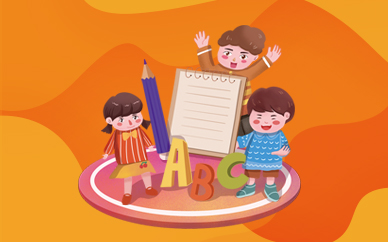hello,我是数字华夏网小杨来为大家解答以上问题,赎罪的道路(赎罪Atonement很多人还不知道,现在让我们一起来看看吧!
 (资料图片仅供参考)
(资料图片仅供参考)
赎罪 Atonement伊恩·麦克尤恩Ian McEwan
Ian McEwan’s symphonic novel of love and war, childhood and class, guilt and forgiveness provides all the satisfaction of a brilliant narrative and the provocation we have come to expect from this master of English prose.
On a hot summer day in 1935, thirteen-year-old Briony Tallis witnesses a moment’s flirtation between her older sister, Cecilia, and Robbie Turner, the son of a servant and Cecilia’s childhood friend. But Briony’ s incomplete grasp of adult motives–together with her precocious literary gifts–brings about a crime that will change all their lives. As it follows that crime’s repercussions through the chaos and carnage of World War II and into the close of the twentieth century, Atonement engages the reader on every conceivable level, with an ease and authority that mark it as a genuine masterpiece.
Ian McEwan is the bestselling author of more than ten books, including the novels The Comfort of Strangers and Black Dogs, both shortlisted for the Booker Prize, Amsterdam, winner of the Booker Prize, and The Child in Time, winner of the Whitbread Award, as well as the story collections First Love, Last Rites, winner of the Somerset Maugham Award, and In Between the Sheets. He has also written screenplays, plays, television scripts, a children’s book, and the libretto for an oratorio. He lives in London.
《赎罪》是当代英国小说家伊恩·麦克尤恩的长篇小说,讲述了一个关于爱情、罪恶和战争的故事。
主人公布里奥妮幼年时因一次误会导致姐姐塞西莉娅与恋人罗比分离至死,自此花费一生时间创作小说《赎罪》,以求为自己早年的错误赎罪。《赎罪》以四个不同的历史片段为叙述内容,以多元繁复的叙述策略讲述一个关于爱与赎罪的故事。麦克尤恩通过主人公布里奥妮的心灵历史重塑,从个人历史的微观层面窥探长达60余年的20世纪历史图景。小说中所采取的叙述策略契合了当代英美小说经历后现代主义洗礼后的现实主义回潮。
第一阶段是1935年的英国乡下田园时期,热爱写作的女主人公布里奥妮·塔利斯,一个庄园主的13岁的小女儿聪慧且想象力丰富,在一个炎热的夏日她亲眼目睹了姐姐塞西莉亚在管家儿子罗比的面前,脱下衣裙跃入水池的画面,其后她又偷偷的私拆了罗比写个妇姻的情书,被期间的直向粗俗的内容所震动。直到一晚,她看见姐姐和罗比交缠在一起的身影,误以为罗比强暴了塞西莉亚,恰巧当晚表姐罗拉遭人强暴,布里奥妮就认定了罗比是这起事故的罪犯,最终导致罗比入狱。
第二阶段是1940年的二战期间,罗比和塞西莉亚公布了跨越阶级的恋情,为了洗刷耻辱罗比毅然从军,塞西莉亚也随之入伍。在残酷的战火中,二人相继失去了宝贵的生命。布里奥妮也随之陷入深深的自责和隗疚中。
第三阶段也就是小说最后的20页,布里奥妮自述了她对赎罪和自我救赎的感受。
试听音频
THE PLAY—for which Briony had designed the posters, programs and tickets, constructed the sales booth out of a folding screen tipped on its side, and lined the collection box in red crêpe paper—was written by her in a two-day tempest of composition, causing her to miss a breakfast and a lunch. When the preparations were complete, she had nothing to do but contemplate her finished draft and wait for the appearance of her cousins from the distant north. There would be time for only one day of rehearsal before her brother arrived. At some moments chilling, at others desperately sad, the play told a tale of the heart whose message, conveyed in a rhyming prologue, was that love which did not build a foundation on good sense was doomed. The reckless passion of the heroine, Arabella, for a wicked foreign count is punished by ill fortune when she contracts cholera during an impetuous dash toward a seaside town with her intended. Deserted by him and nearly everybody else, bed-bound in a garret, she discovers in herself a sense of humor. Fortune presents her a second chance in the form of an impoverished doctor—in fact, a prince in disguise who has elected to work among the needy. Healed by him, Arabella chooses judiciously this time, and is rewarded by reconciliation with her family and a wedding with the medical prince on “a windy sunlit day in spring.”
Mrs. Tallis read the seven pages of The Trials of Arabella in her bedroom, at her dressing table, with the author’s arm around her shoulder the whole while. Briony studied her mother’s face for every trace of shifting emotion, and Emily Tallis obliged with looks of alarm, snickers of glee and, at the end, grateful smiles and wise, affirming nods. She took her daughter in her arms, onto her lap—ah, that hot smooth little body she remembered from its infancy, and still not gone from her, not quite yet—and said that the play was “stupendous,” and agreed instantly, murmuring into the tight whorl of the girl’s ear, that this word could be quoted on the poster which was to be on an easel in the entrance hall by the ticket booth.
本文到此结束,希望对大家有所帮助。







































